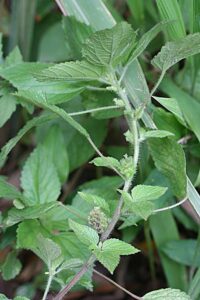How to Propagate Acalypha scabrosa

Propagating Acalypha scabrosa: A Gardener’s Guide to the Velvet Plant
Introduction
Acalypha scabrosa, commonly known as the velvet plant or Chinese copperleaf, is a captivating shrub prized for its striking, velvety foliage and unique inflorescences. Its rich, textured leaves, often displaying shades of deep green to bronze, along with its attractive catkin-like flowers, make it a popular choice among gardeners seeking an interesting addition to borders, containers, or hanging baskets. While relatively easy to maintain, propagating Acalypha scabrosa presents some unique challenges, making successful propagation a rewarding experience. Its popularity has led to a desire for efficient propagation methods, explored in detail below.
Seed Germination
Currently, there are no known reliable methods for seed germination propagation of Acalypha scabrosa. While the plant does produce seeds, their viability and germination rate are extremely low under typical horticultural conditions. Further research is needed to determine if specific pre-treatments or germination environments might improve success.
Cuttings
Cuttings represent a much more reliable method for propagating Acalypha scabrosa.
Challenges: The main challenge with cuttings lies in successfully rooting them. Acalypha scabrosa can be somewhat slow to root.
Practical Tips: Semi-hardwood cuttings taken in late spring or early summer are ideal. Take cuttings of approximately 4-6 inches long, removing lower leaves to prevent rot. Dip the cut ends in rooting hormone powder before planting them in a well-draining propagation mix (e.g., a mix of perlite and peat moss). Maintain consistently moist but not waterlogged conditions and high humidity (e.g., using a humidity dome or propagator). Bottom heat can significantly improve rooting success.
Rewards: Cuttings provide a relatively quick and efficient method for producing genetically identical plants, preserving desirable traits. This method is suitable for both home gardeners and small-scale nurseries.
Division
Division is a viable method, but less commonly used than cuttings, particularly for established plants.
Challenges: Successfully dividing Acalypha scabrosa requires careful handling to avoid damaging the roots, which can hinder the establishment of the divisions. Larger, more mature plants are generally easier to divide.
Practical Tips: The best time for division is during spring, when new growth is emerging. Dig up the plant carefully, gently separating the root ball into smaller sections, ensuring each division has sufficient roots and healthy stems. Replant the divisions into well-prepared soil, keeping them well-watered until established.
Rewards: Division offers a simple way to increase the number of plants, particularly for larger, established specimens.
Tissue Culture
Tissue culture offers the potential for large-scale propagation and the production of disease-free plants.
Challenges: Tissue culture requires specialized equipment, sterile conditions, and technical expertise. It is generally not a viable option for home gardeners.
Practical Tips: Successful tissue culture requires a detailed protocol specific to Acalypha scabrosa, including selecting appropriate media, growth regulators, and sterilization techniques.
Rewards: Tissue culture allows for rapid multiplication of elite plants and the production of a large number of uniform plants. It’s particularly useful for commercial propagation and the conservation of rare or endangered varieties.
Conclusion
Propagating Acalypha scabrosa, while presenting some unique challenges, is achievable with the right approach. Cuttings offer the most reliable and accessible method for most gardeners, while division is a viable option for larger plants. Seed propagation currently remains unreliable. Tissue culture offers the possibility of large-scale propagation, despite its technical demands.
The satisfaction derived from nurturing a cutting into a thriving velvet plant is substantial, reflecting the patience and persistence required. The unique velvety leaves and unusual flowers make the effort worthwhile. For aspiring propagators, remember that success relies on meticulous attention to detail – proper soil, appropriate watering, and optimal humidity are key. Don’t be discouraged by initial setbacks; the beauty of Acalypha scabrosa makes the journey a rewarding one.